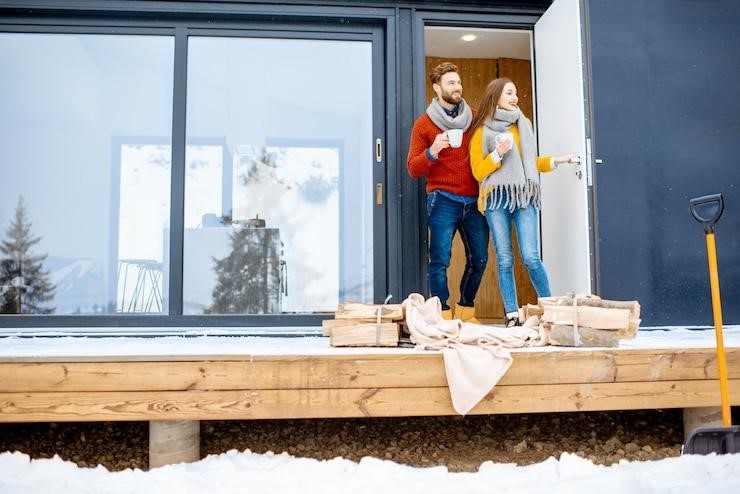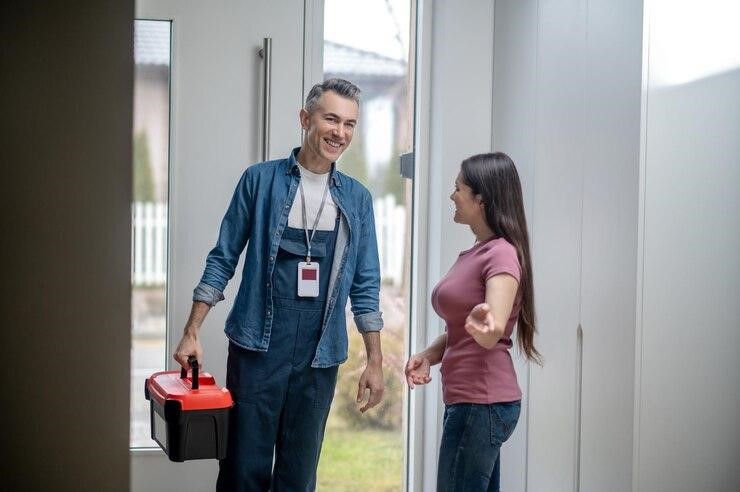When the cold winter months arrive, landlords need to pay special attention to winterizing their properties. This can help you avoid the hassle and costs associated with frozen and burst pipes.
Frozen pipes can cause major damage to any rental property. For example, it can cause flooding, which would ruin drywall and floors. On the other hand, you will have to deal with the expenses associated with pipe repairs and replacement.
Read this guide, and we will share more details on how to resolve issues from frozen pipes and other maintenance concerns during winter.
Understanding the Risks of Frozen Pipes During Winter
As temperatures drop each winter, landlords must be proactive to prevent frozen and burst pipes that can cause water damage, disrupt tenants, and lead to costly repairs. Protecting your property and minimizing headaches this winter starts with understanding exactly where and why pipes typically freeze in rental homes.
What Pipes are Most Vulnerable?
The most vulnerable pipes are those exposed to very cold outdoor air or drafts, like exterior hose bibs, pipes in unheated interior spaces like crawl spaces and attics, and pipes running through cabinets or uninsulated exterior walls.
Pipes that run through spaces prone to cold air, like near unsealed doors, windows, or openings, are also high risk. When the water inside pipes drops below 32°F and freezes, it expands, placing intense pressure on pipes, which leads to cracks and bursts.
How to Identify Pipes at Risk?
There are clear signs that pipes are at risk of freezing that landlords should watch out for. These include drops in water pressure, discolored water, condensation on pipes, and very slow dripping water at faucets despite shut-off valves. These warn that pipes have begun to freeze.
Tenants may also hear gurgling noises from air bubbles in freezing water or the loud crack of an already burst pipe. Acting quickly when these red flags appear can help avoid serious damage.
To get ahead of any issues, there are several easy winterization steps every landlord should take.
Key tasks you don’t want to skip are insulation of water pipes that are prone to freezing, sealing any drafts around pipes, repairing cracks and holes in foundation walls, ensuring adequate heat sources are reaching all areas with pipes, and shutting off and draining any exterior hose bib lines.
Implementing solid prevention measures takes some time upfront, but it will save landlords from a huge hassle this winter. Don’t wait until pipes freeze or rupture—act now to identify risks and proactively winterize your rental property.
Are Landlords Responsible for Frozen Pipes?

Landlords are responsible for frozen pipes are a frequent concern, and in most cases, landlords are obligated to ensure that the property is properly maintained to prevent such issues.
It is Your Responsibility
First, local building, health, and safety housing codes require landlords to maintain essential services like plumbing in good working order. Frozen pipes that disrupt the water supply violate this responsibility.
Second, the warranty of habitability also requires that landlords provide a warm, safe, and habitable property in line with community standards. Unresolved frozen pipe issues that lead to periods without essential plumbing services breach this implied warranty.
It Can Help You Avoid More Costly Issues
Landlords choose what preventative measures to proactively take or not take ahead of winter, including insulating pipes, maintaining adequate heat, sealing drafts near water lines, and draining exterior taps. If they fail to make reasonable preparations, greater liability falls upon the landlord when frozen pipe problems occur.
On the other hand, landlords may have more grounds to recoup their costs if a tenant is clearly negligent, such as allowing heat to be turned dangerously low.
While landlords cannot always prevent issues like unusually long or severe cold snaps, they do need to show they took appropriate precautions based on average winter climate expectations. This means putting in the work at the start of each winter season rather than waiting until mid-winter crises hit.
Communicating clearly in writing with tenants on things like maintaining proper heat also helps establish reasonable shared expectations and responsibilities. But if it is too much work for you as a landlord, you need to work with a property manager.
When searching for property managers in Boston, it’s important to find someone familiar with the area’s real estate market.
Preventative Measures to Avoid Frozen Pipes and Property Damage
The most effective way for landlords to avoid the headaches and costs of frozen and burst pipes is to be proactive before winter gets into full swing. Implementing strategic preventative measures can significantly reduce property damage, inconvenient outages, and repair expenses down the line.
Install Proper Insulation
One of the most vital preventative steps is ensuring adequate heat sources and proper insulation in all areas containing water pipes. Prioritize insulating pipe runs along exterior walls, in attics or crawl spaces, and leading to unheated indoor areas.
Sealing all wall cracks, openings, or gaps near pipes helps stop cold drafts. Landlords should also upgrade old windows and doors that leak in the cold around pipes. Installing pipe sleeves, heat trace wires, or heating tape adds extra protection.
Promote Improving Heat Circulation
For pipes already located on exterior walls, encouraging tenants to keep furniture, storage boxes, curtains, or rugs at least a foot away can help heat circulate. Tenants should keep cabinet doors below sinks open to let rising warm air reach concealed pipes, too.
Focus on Preventive Maintenance
Landlords also need to drain, disconnect, and shut off exterior hose bib lines thoroughly. Identifying where the shut-off is for the main water line can speed up emergency response. Marking and mapping shut-offs also enables quicker response times.
By sealing vulnerable spots for drafts, maintaining warmer baseline temperatures, and addressing higher-risk pipe locations, landlords set their property up for success before plunging temperatures hit. Acting ahead of time mitigates danger zones and prevents frozen pipe emergencies from ever taking shape.
Staying vigilant over the winter and communicating clearly with tenants about precautions also keeps everyone accountable for following best practices.
Final Words
The reality is that when pipes freeze, burst, or fail, the buck most often stops with the landlord for restoration and repair costs. Taking strategic preventative measures before the cold sets in is the best way owners can curb both liability and any icy surprises this season.
Follow the tips we shared in this guide, and you will be able to stay away from such issues in the winter season.






